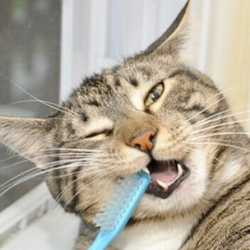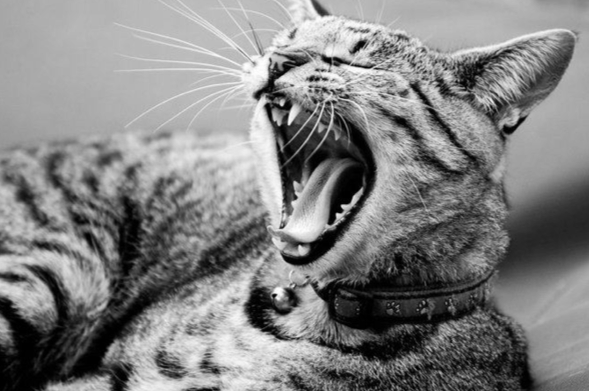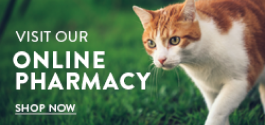Did you know? 70% of cats over the age of 3 have dental disease.
Cat Tooth Problems
Four types of feline dental disease make up the vast majority of problems for which the extraction of one or more teeth may be the only remedy:
Periodontal disease is the most common, affecting an estimated 85 percent of cats over the age of six. In this disease, layers of plaque accumulate and harden on the tooth surface. Bacterial poisons and enzymes from the plaque eventually prompt an inflammatory response in the gums (gingiva) that, if left untreated, leads to severe gum inflammation (gingivitis). In cats, advanced periodontal disease can quickly progress to an end-stage condition for which extraction is the only reasonable treatment option.
Feline odontoclastic resorptive lesions (FORL) is another comparatively common dental affliction, affecting an estimated 50 percent of cats. This disease is characterized by plaque-caused lesions that start in the bone tissue (dentin) just below the enamel. Due to an inappropriate immune-system response, the tissue is unable to rebuild itself, and the lesions can progress rapidly and damage the tooth and its root irreparably.
Feline gingivitis/stomatitis syndrome (FGS) is a relatively uncommon condition, occurring in about one in 100 cats, most frequently among those with feline leukemia virus (FeLV), feline immunodeficiency virus (FIV), or other viral, nutritional or hormonal conditions. Although antibiotics and steroid therapy may be helpful in some cases, extraction of most or all teeth may be the only treatment option.
Fractured teeth may occur as the result of trauma or, less commonly, through chewing. Doing nothing leaves a broken tooth that is painful and a possible avenue for infection. Extraction thus fulfills the goals of relieving the affected cat’s pain and preventing infection.
It may be time for your cat to have a dental exam. Our Comprehensive Oral Health Assessment and Treatment (COHAT) includes:
- Pre-anesthetic bloodwork
- Anesthesia and monitoring
- Complete oral exam
- Teeth scaling and polishing
- Full mouth x-rays
- Extractions as needed
- Pain medication
Signs that your cat may have dental disease:
- Bad breath
- Vocalizing
- Red, swollen gums
- Pawing at face
- Chewing on one side of the mouth
- Dropping food, eating more slowly than normal
- Drooling
- Appearing hungry, then backing away from the food bowl
- Losing weight
- Failing to groom
- Depression or lethargy








One reply on “All About Your Cat’s Dental Health”
Thanks for the information. You’re right, it’s so important to make sure your cat’s health is in good condition. My cat has a few of those signs of dental disease that you mentioned, like bad breath and red, swollen gums. It seems to me like I should probably take her into a cat clinic to get it checked out.